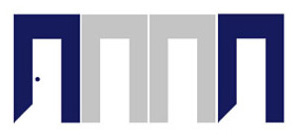Communication and Contingency approach to Management
A library is a system and all parts are interconnected, so how can a director ensure that information is shared within and across teams, so that you do not discover that some teams are actually working against each other?
There are libraries of all sizes and logistically they all solve their communications issue in their own ways. However, no matter the size of the organization, I think that there are two main parameters or approaches that should be tackled. The first one is direct, constant communication. Regular meetings where staff members discuss their current projects and future ones might help the rest of the participants to know what it is been done and who is in charge. Conversations between team members and between teams is fundamental for the functioning of any institution. There are no jobs completely isolated within a library. Programming may need to deal with collections and reference. Cataloging may deal with IT. All aspects of librarianship are interconnected and so should be the communication. Current technologies provide, for that matter, inexpensive and efficient ways to get groups together. Online meetings, conference calls are all available in most environments.
Personally, I am a believer of the use of internal newsletters. A short constant communication of what it’s been done at the library will keep staff up to date not only on the work performed by other teams but the resources available for everybody.
I want to mention also the power of the cloud. The possibility, for distant members, to work together on a project is a beautiful thing. However, beyond that, our new world allows also to keep a digital repository of specific information that we can share with the rest of the organization. A searchable knowledge base to avoid rework is a useful tool that can be continuously enriched and improved.
Finally, I think that there has to be, inside the library, a culture of embracing internal communication. I understand, we are all extremely busy in our jobs, but a dynamic director may -or should- make sure communication is constant, fluid, relevant, and also fun. We are all humans, we want to say what we do, we want to know what others do (Does Facebook ring a bell? Or twitter?) The more open we are to share our job experiences, achievements, and difficulties with the rest of the organization, the more others will learn and be better at theirs.
Advantages and any disadvantages of the contingency approach to leading.
There are so many leadership theories and approaches that it is, sometimes, hard to make sense of all of them. Mainly, because they all basically have valid points and get results in their own universes. Why there are so many, then? I guess it is because times change, corporate cultures change, the way we communicate changes, generations change. I’d say, it seems impossible to have a theory capable of handling all possibilities within a structure. Perhaps, that’s the reason why some leadership theorists have proposed one that -in a way- is trying to comprise all of the others, with less of a recipe approach and a more holistic view. By being flexible to circumstances, the contingency theory allows different possibilities for different situations within the same organization. It is a theory aware of context which gives it a broader view to find solutions and reach goals. Additionally, contingency may deal better with the quick changes we are seeing nowadays. Advances in technical areas -even migration patterns- require quick responses and adaptability. Contingency could supply those.
However, because subordinates are not all the same either, not all respond well to contingency leadership. Some may see the differences in behavior and approaches as confusing, even unfair. Rapid changes according to circumstances may be unnerving and stressful for some employees. Contingency leadership has to balance continuity and innovation with extreme care.
This is a theory that requires a crafty leader that knows how to deal with complexity. It requires a leader capable of transmitting clearly his goals and objectives to all teams. She also has to be able to help create a convivial space within the organization walls without stopping the fluid and continual changes that occur day in and day out in our communities and consequently in our libraries.
